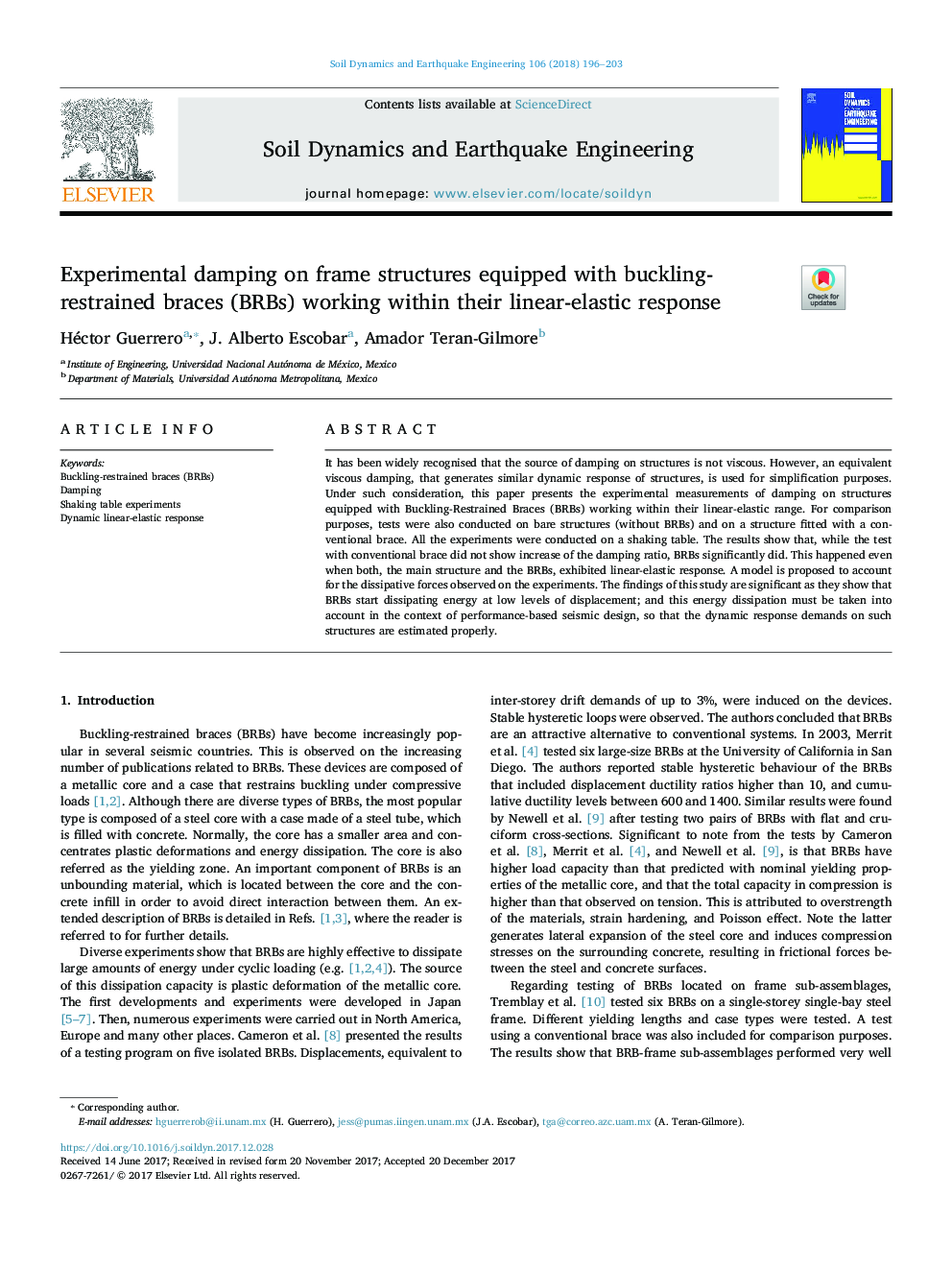| Article ID | Journal | Published Year | Pages | File Type |
|---|---|---|---|---|
| 6770907 | Soil Dynamics and Earthquake Engineering | 2018 | 8 Pages |
Abstract
It has been widely recognised that the source of damping on structures is not viscous. However, an equivalent viscous damping, that generates similar dynamic response of structures, is used for simplification purposes. Under such consideration, this paper presents the experimental measurements of damping on structures equipped with Buckling-Restrained Braces (BRBs) working within their linear-elastic range. For comparison purposes, tests were also conducted on bare structures (without BRBs) and on a structure fitted with a conventional brace. All the experiments were conducted on a shaking table. The results show that, while the test with conventional brace did not show increase of the damping ratio, BRBs significantly did. This happened even when both, the main structure and the BRBs, exhibited linear-elastic response. A model is proposed to account for the dissipative forces observed on the experiments. The findings of this study are significant as they show that BRBs start dissipating energy at low levels of displacement; and this energy dissipation must be taken into account in the context of performance-based seismic design, so that the dynamic response demands on such structures are estimated properly.
Related Topics
Physical Sciences and Engineering
Earth and Planetary Sciences
Geotechnical Engineering and Engineering Geology
Authors
Héctor Guerrero, J. Alberto Escobar, Amador Teran-Gilmore,
